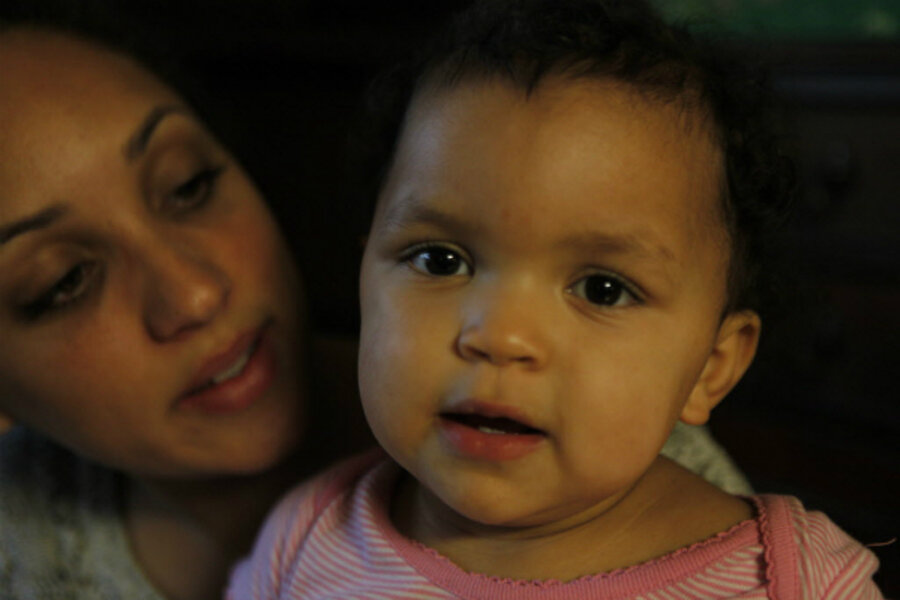Surge in unwed mothers: Deep in the stats, it's not what you think
Loading...
Social critics are aflutter this week, with the release of a report from the US Census Bureau showing that 62 percent of new moms in their early 20s are unmarried. The report also found that 36 percent of all moms were unwed in 2011, up from 31 percent in 2005. In families with incomes of less than $10,000, that number goes up to 69 percent.
This is troubling news, according to pundits on both sides of the political spectrum. Single moms are one of the most disadvantaged groups in the US – nearly 30 percent of their families live under the poverty line, according to the US Census, as compared with 6.2 percent of families with married parents.
Those on the right tend to frame these perils in terms of deteriorating values and a growing disregard for marriage. (Married parents are statistically way better off, as are their kids.)
On the left, the worry about single moms is transferred into demands for improved social safety nets and economic gender equity. (Raise pay for women, give better maternity leave and sick day policies, get government helping out more with child care, and all of a sudden the economic disparity between married and non-married moms drops.)
Indeed, the question of how to help single moms should be front and center for US policy makers. Children of single mothers are at higher risk than their married-family peers for a variety of social ills, from impoverishment to poor academic achievement to incarceration.
But here’s the issue: To delve straight from the new report into the single mom debate misses a significant part of the family picture.
That part of the picture where Mommy and Daddy are both there, smiling for the camera, but without wedding rings.
The new report, “Social and Economic Characteristics of Currently Unmarried Women with a Recent Birth: 2011,” includes both “single moms” and women who live with the father of their baby in its economic analyses. (The numbers come from the American Community Survey, a statistical population survey that asks respondents about everything from marital status to the nature of plumbing in their residences.) Of the 1.4 million unmarried women in the survey who gave birth in the past 12 months, almost 408,000 described themselves as a “partner in an unmarried partner household.”
And it’s this latter group that is attracting a good bit of attention – and disagreement – these days.
According to the US Centers for Disease Control, 42 percent of children will have lived with cohabitating parents by the time they are 12 years old, almost twice as many who will have divorced parents. And this particular sort of family structure is on the rise, a number of studies show.
Conservatives, again, tend to worry about the implications of this apparent rejection of marriage.
As with single moms, unmarried-but-together parents tend to be poorer and less academically advanced than their knotted neighbors; they also tend to break up more often than married parents, with lasting impact on kids. (It’s harder to get divorced than to simply leave the house. Just ask anyone who’s tried both.) Children of these relationships do worse in school, jobs, and life in general, according to the statistics.
But again, there’s a lot more nuance once you start digging.
It’s true that lower educated and less economically advantaged women are more likely to be in cohabitating parental relationships rather than marriages – at least in the US. (In other countries the weight is shifted in the opposite direction.) But some research has indicated that there might be a chicken-egg problem when it comes to this topic.
Once you strip out the other predictors of problems for children (poverty, relationship stability, and so on) family structure doesn’t make all that much difference.
Mom’s education does. So does age. And general stability.
And those, of course, are all linked, too.
The connection between marriage and parenting, it turns out, is a lot more complicated than the shocked pundits might have you believe.








